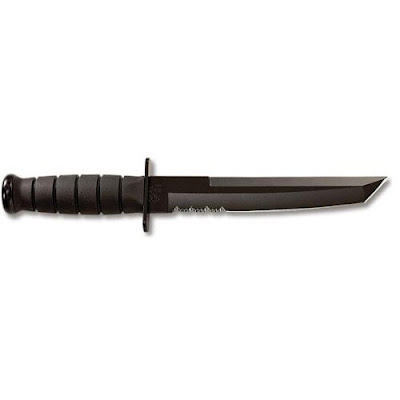The Tanto is a Japanese short sword with a traditional overall length of 11.93 inches or about 30 centimeters. The length of blade is 5 inches to 12 inches long. It is efficiently reliable for extremely close fighting as well as for a ritual called Seppuku. The Tanto was then the perfect choice as an instrument for Seppuku. In this detailed ritual, Seppuku was usually performed in front of spectators. A samurai was bathed and dressed in white robes, ate his favorite meal and after he's done eating, the Tanto was placed on the same plate.
The samurai dressed ceremonially sometimes seated on special cloths, prepares for his death by writing a death poem. Standing beside him is his selected attendant (kaishakunin), the samurai would open his kimono, take up his Tanto or Japanese knife and plunge it into his abdomen and make a left to right cut. The kaishakunin then performs dakukubi or a cut in which the warrior was all but intentionally decapitated or having his head cut off. Such task should be carried out with precision requiring the kaishakunin often to be a skilled swordsman. It is usually agreed in advance that the kaishakunin swiftly do the decapitation as soon as the dagger was plunged deep into the abdomen.
The samurai dressed ceremonially sometimes seated on special cloths, prepares for his death by writing a death poem. Standing beside him is his selected attendant (kaishakunin), the samurai would open his kimono, take up his Tanto or Japanese knife and plunge it into his abdomen and make a left to right cut. The kaishakunin then performs dakukubi or a cut in which the warrior was all but intentionally decapitated or having his head cut off. Such task should be carried out with precision requiring the kaishakunin often to be a skilled swordsman. It is usually agreed in advance that the kaishakunin swiftly do the decapitation as soon as the dagger was plunged deep into the abdomen.

